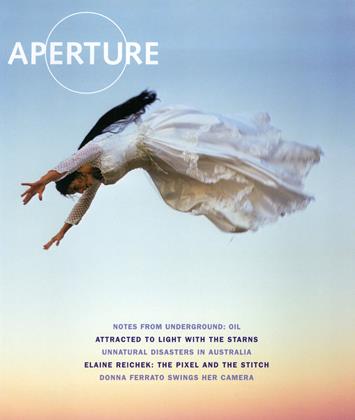Subscribe to Read This Article Already a subscriber? Sign in
 View Full Issue
View Full Issue
More From This Issue
-
 Work And Process
Work And ProcessElemental Vision: Matter, Paradox And Other Absorptions Of Doug And Mike Starn
Summer 2004 By Frederick Kaufman -
 On Location
On LocationThe Unquiet Landscapes Of Rosemary Laing
Summer 2004 By Abigail Solomon-Godeau -
 Roads Less Traveled
Roads Less TraveledA Crude World
Summer 2004 By Serge Enderlin, Serge Michel, Paolo Woods -
 Mixing The Media
Mixing The MediaElaine Reichek Stitchellated Pics
Summer 2004 By David Frankel -
 Meetings
Meetings10 Years: From Analog To Digital: Zonezero
Summer 2004 By Mark Haworth-Booth -
 Notes
NotesNotes
Summer 2004
Subscribers can unlock every article Aperture has ever published Subscribe Now
More From This Issue
-
 Work And Process
Work And ProcessElemental Vision: Matter, Paradox And Other Absorptions Of Doug And Mike Starn
Summer 2004 By Frederick Kaufman -
 On Location
On LocationThe Unquiet Landscapes Of Rosemary Laing
Summer 2004 By Abigail Solomon-Godeau -
 Roads Less Traveled
Roads Less TraveledA Crude World
Summer 2004 By Serge Enderlin, Serge Michel, Paolo Woods



